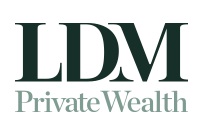Home values continued to trend higher during the quarter to the end of April, despite factors at play that would normally constrain price rises. These factors include the current high interest rates, low consumer sentiment, worsening housing affordability, and the ongoing cost of living pressures.
The reason for continued growth despite the above influences appears to be low housing supply. The continued mismatch between available supply and demonstrated demand is keeping markets skewed in favour of sellers in most cities.
Persistent growth
In the three months to April 30, CoreLogic’s Home Value Index (HVI) reported national values had risen by 1.8%. Over the same period, the combined capital cities increased by 1.7% and the combined regions were up by 2.1%.
Perth was a strong contributor to the gains recorded, surging ahead in growth compared to the other capitals. Perth property prices increased by 6.0% in the past three months taking the 12-month hike in the West Australian capital to an incredible 21.1%.
Eleanor Creagh, senior economist at REA Group’s data business PropTrack, provided explanation for the persistent rise in housing values across most capital cities and regions, in the latest PropTrack Home Price Index. “The stable interest rate environment has been a driver of confidence among buyers and sellers. Higher than expected inflation in the March quarter has pushed back the expected timing of rate cuts but most expect that the next move for interest rates will be down although the timing remains uncertain.” She added “Strong population growth, tight rental markets, low unemployment, and home equity gains are stimulating housing demand. Meanwhile, the supply side of the housing market has fallen short in responding to substantial demand.”
Stronger growth in the lower end of the market
The market’s lower value range is recording stronger growth conditions across most capital cities, except Darwin, where housing affordability is less challenging. Sydney’s lower quartile and middle sector of the market are showing the same quarterly change at 1.7% compared with a 0.5% rise in upper quartile dwelling values.
CoreLogic research director Tim Lawless explained “The shift towards stronger conditions across lower value markets can also be seen between the housing types, with growth in unit values outpacing house values over the past three months.”
Home values moving forward
With persistent high interest rates, the recent surprise increase in inflation, a gradual loosening in labour markets, growing housing affordability challenges and a slowdown in economic activity, the downside risk for housing markets is building. However, housing values are likely to be propped up by the mismatch between housing supply and demand; a situation that doesn’t look like it will change any time soon.
Rents still on the rise
Nationally, rents were up 0.8% in April, a slightly lower rate of growth relative to February and March when the national rental index rose 0.9% and 1.0%, respectively.
Tim Lawless explained the slower rate of growth could be attributed to seasonal factors “The slowdown in rental growth is likely to be partly seasonal, with the first quarter of the year generally coinciding with a lift in student demand and new leases at the beginning of the year.”
National rents have been rising at a faster pace than values since November last year, supporting a rise in gross rental yields. In April, the national gross rental yield rose to 3.75%, the highest reading since October 2019, up from a record low of 3.16% in January 2021.
Gross rental yields have remained strong in capital city markets, rising slightly on a national level from late 2023 and into early 2024. The subtle rise in rental yields can be attributed to rental rates once again rising at a faster rate than dwelling values since November 2023.
Dwelling values over the quarter
Over the quarter all capitals with the exception of Melbourne recorded an increase, with Melbourne recording no increase. The mid-sized capitals of Perth, Brisbane and Adelaide continued to lead the pace of growth. Regional markets experienced slightly higher growth than the combined capital cities with an increase of 2.1% over the quarter.
Melbourne
The Victorian capital recorded a median dwelling value of $783,261 – again sitting close to the national median of $779,817. The city saw no growth across the quarter with a 0.0% change in dwelling values, and moved into negative territory for the month, down -0.1%. The annual increase for Melbourne was 2.8%.
Sydney
Maintaining its place as the country’s most expensive city at $1,145,931, quarterly figures show the Harbour City rising 1.1%. The annual figure demonstrates a more impressive number having jumped 8.7% in 12 months.
Brisbane
Brisbane’s median home price is now $827,822 after a quarterly increase of 3.1%, with the pace of gains slowing. During the 12 months to April 30, median dwelling prices jumped 16.1%.
Canberra
The nation’s capital, Canberra had a quarterly home price movement of just 1.0% taking the current median to $847,604. Over the past year, the nation’s capital rose by 2.1%.
Perth
Continuing a trend of robust growth, Perth has recorded an annual home value surge of 21.1% to a median of $721,278. With a quarterly pace of growth, at 6.0%, Perth is approaching the cyclical highs seen during the pandemic when interest rates were at rock bottom.
For more information about how you might be able to purchase a property in the current market, get in touch with us today.
|
City |
Houses |
Units |
Dwellings |
|
Melbourne |
$941,698 |
$613,023 |
$783,261 |
|
Sydney |
$1,421million |
$844,659 |
$1.146 million |
|
Brisbane |
$920,046 |
$600,215 |
$827,822 |
|
Canberra |
$972,699 |
$592,879 |
$847,604 |
|
Perth |
$753,947 |
$508,988 |
$721,278 |
Note: all figures in the city snapshots are sourced from: CoreLogic’s national Home Value Index (April 2024)
Important: This provides general information and hasn’t taken your circumstances into account. It’s important to consider your particular circumstances before deciding what’s right for you. Although the information is from sources considered reliable, we do not guarantee that it is accurate or complete. You should not rely upon it and should seek qualified advice before making any investment decision. Except where liability under any statute cannot be excluded, we do not accept any liability (whether under contract, tort or otherwise) for any resulting loss or damage of the reader or any other person.
Any information provided by the author detailed above is separate and external to our business and our Licensee. Neither our business nor our Licensee takes any responsibility for any action or any service provided by the author. Any links have been provided with permission for information purposes only and will take you to external websites, which are not connected to our company in any way. Note: Our company does not endorse and is not responsible for the accuracy of the contents/information contained within the linked site(s) accessible from this page.



